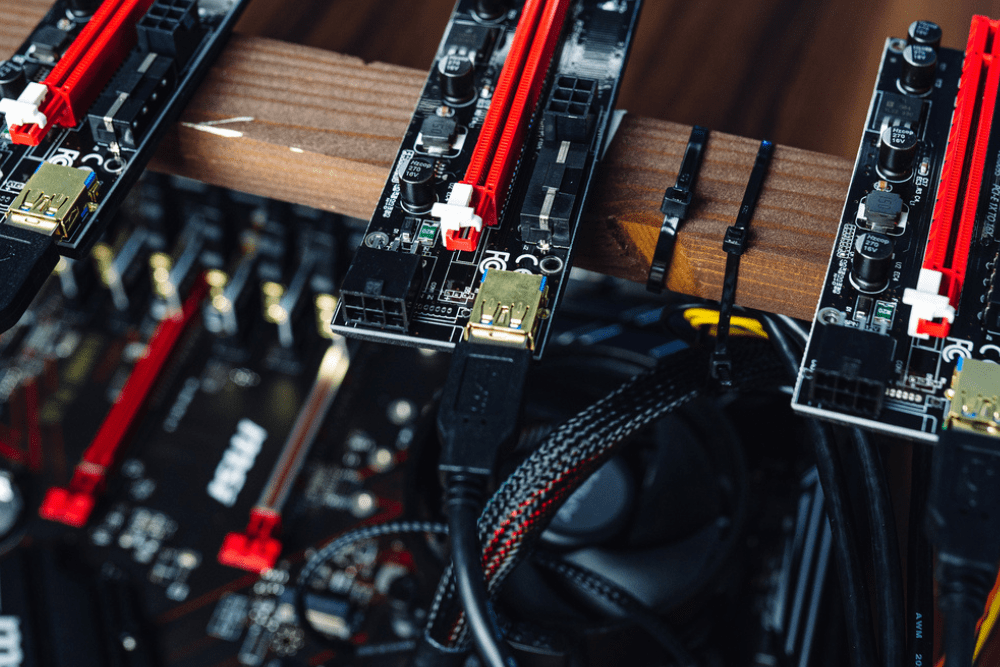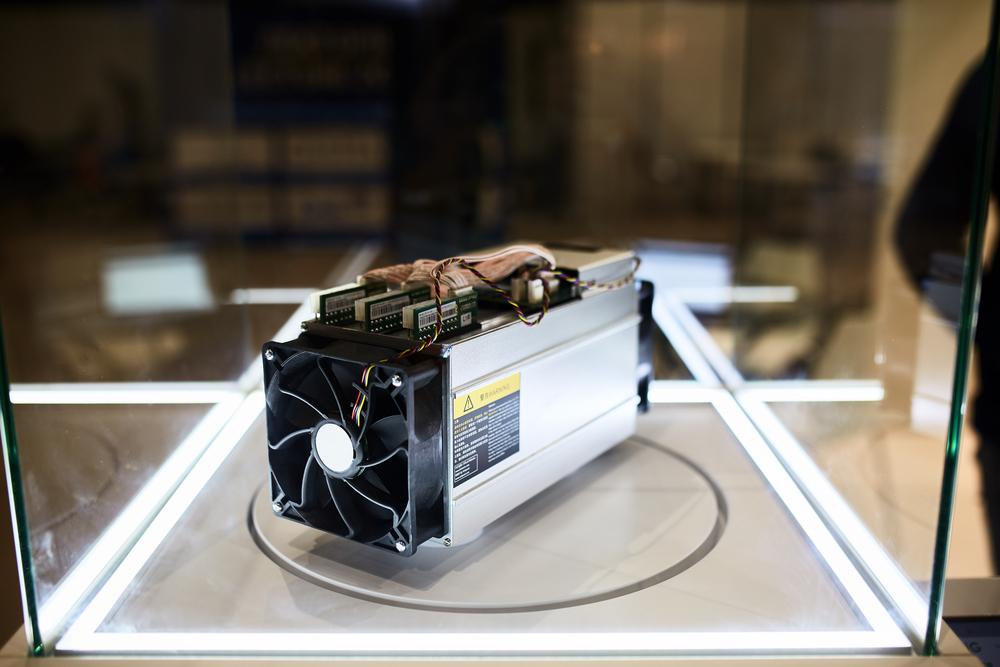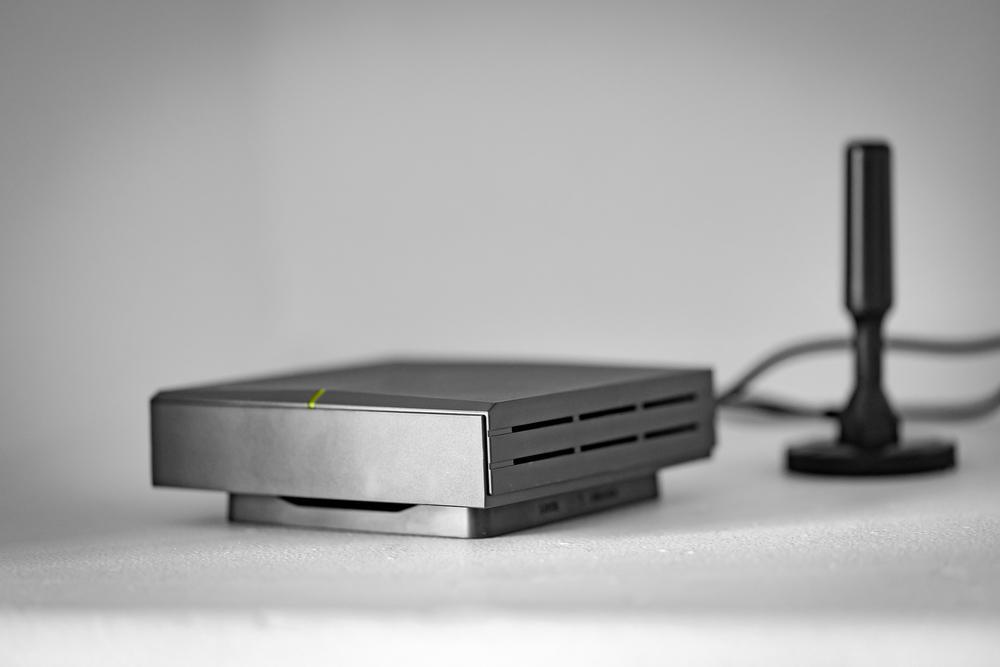Hardware for Cryptocurrency Mining: An Overview
Cryptocurrency mining requires specialized hardware to perform the complex calculations needed to verify transactions and maintain the security of the network. In this guide, we’ll explore the different types of hardware used for cryptocurrency mining, including mining rigs, graphics cards, and other specialized equipment.
ASIC Mining Rigs
A mining rig is a computer system specifically designed for cryptocurrency mining. These rigs typically consist of multiple high-end graphics cards, a powerful processor, and a large amount of RAM. Mining rigs are designed to be highly efficient, with each component working together to maximize mining performance.

Popular ASIC Mining Rig Manufacturers

Bitman

Ipollo

Ibelink

Goldshell

Canaan

Jasminer

Innosillicon
Graphics Cards
Graphics cards, also known as GPUs, are a key component of many cryptocurrency mining rigs. These cards are designed to handle complex calculations quickly and efficiently, making them ideal for mining cryptocurrency. While some cryptocurrencies are designed to be mined using specialized hardware, others are ASIC-resistant and can be mined using a graphics card.
IOT Mining: Helium Miner HNT
IOT mining is a new and exciting way to mine crypto, and the Helium Miner HNT is one of the most popular IOT miners on the market today. This miner is specifically designed to mine Helium’s HNT cryptocurrency, which is used to power Helium’s wireless network.
One of the main advantages of the Helium Miner HNT is its compact design, which makes it perfect for home use. It can easily fit on a desk or shelf, and its low power consumption means it won’t drive up your electricity bill.
The Helium Miner HNT runs on a Raspberry Pi, which makes it easy to set up and operate. The Raspberry Pi is a small, inexpensive computer that can be programmed to run various applications, including crypto mining software.
In terms of maintenance, the Helium Miner HNT requires very little attention. It’s designed to be plug-and-play, meaning you can simply connect it to your Wi-Fi network and start mining. However, it’s important to note that the Helium network relies on a system of “hotspots” to maintain its wireless coverage. As a result, the profitability of the Helium Miner HNT may be affected by the number of hotspots in your area.
Overall, the Helium Miner HNT is a great option for anyone interested in IOT mining. Its compact design, low power consumption, and potential profitability make it an attractive choice for home miners. Plus, its use of Helium’s wireless network provides a unique opportunity to be a part of a new and innovative technology.
Popular Helium Miners:
- Atom
- Bobcat
- Browan/MerryIoT
- Cal-Chip
- ClodPi
- COTX Networks
- Dragino
- Dusun
- EDATEC
- Finestra
- FreedomFi
- FXTec Linxdot
- Heltec
- Hummingbird
- Kerlink
- LongAP
- Midas
- Milesight
- MNTD.
- Nebra
- Osprey (Ingenious Technology)
- Pisces/Green Palm Technologies
- RisingHF
- Sensecap
- Ugwan (Amber-Link)
CPUs for Mining: Intel vs AMD
When it comes to CPU mining, AMD CPUs are currently more popular and profitable than Intel CPUs.
AMD CPUs are known for their excellent multi-threaded performance, which makes them better suited for tasks that involve multiple processes running simultaneously, such as mining. Many mining software programs are optimized for AMD CPUs, which can lead to better performance and higher profitability.
In addition to their strong performance, AMD CPUs are generally more affordable than their Intel counterparts. This can be advantageous for miners looking to build a rig on a budget.
While Intel CPUs have strong single-threaded performance, they tend to consume more power than AMD CPUs. This can result in higher electricity bills and lower profitability for miners.
Ultimately, the best choice between Intel and AMD CPUs for mining depends on your specific needs and budget. However, if you’re looking for a CPU that is optimized for mining and offers strong multi-threaded performance at an affordable price, an AMD CPU may be the better choice.
Popular CPUs for Mining:
Hard Drive Mining: Evergreen Miner
If you’re looking for an efficient and eco-friendly way to mine cryptocurrency, the Evergreen Miner may be the perfect solution for you. This miner uses unused hard drive space to mine Chia, a new cryptocurrency that is designed to be more environmentally friendly than other cryptocurrencies.
The Evergreen Miner is highly efficient and has low power consumption, making it a great choice for miners who want to reduce their energy usage and electricity bills. In addition, the Evergreen Miner is easy to set up and use, even for those who are new to mining.
One of the main advantages of the Evergreen Miner is its use of hard drive space instead of expensive graphics cards or specialized mining hardware. This makes it a more accessible option for miners who may not have the budget to invest in high-end equipment.
When it comes to performance, the Evergreen Miner has impressive statistics. It can mine Chia at a rate of up to 0.4 plots per day, with a power consumption of just 60 watts. This makes it one of the most efficient and profitable options for Chia mining.
Overall, if you’re looking for a more sustainable and cost-effective way to mine cryptocurrency, the Evergreen Miner is definitely worth considering. Its low power consumption, ease of use, and impressive performance make it a great choice for environmentally-conscious miners.
Popular Chia Mining Options:
Evolution of cryptocurrency mining
In the early days of cryptocurrency, mining was a relatively simple process that could be done on a personal computer. This was because the first cryptocurrency, Bitcoin, was designed to be mined using a central processing unit (CPU) – the type of processor found in most personal computers.
However, as the popularity of cryptocurrency grew, so too did the complexity of the mining process. In order to keep the network secure, the difficulty of the mathematical equations that miners needed to solve increased over time. This meant that miners needed to use more powerful hardware in order to continue mining cryptocurrency.
The first major shift in the evolution of cryptocurrency mining occurred with the introduction of graphics processing units (GPUs) to the mining process. GPUs are designed to perform complex calculations quickly and efficiently, making them ideal for cryptocurrency mining. They are particularly useful for mining cryptocurrencies that are designed to be ASIC-resistant, as they can be reprogrammed to mine different types of cryptocurrency.
As cryptocurrency mining continued to evolve, specialized hardware began to emerge that was specifically designed for mining. These specialized devices, called ASICs (Application-Specific Integrated Circuits), are designed to perform a specific task with greater efficiency than general-purpose hardware. In the context of cryptocurrency mining, ASICs are specifically designed to solve the complex mathematical equations required to mine cryptocurrency, making them much more efficient than general-purpose hardware.
Today, the majority of cryptocurrency mining is done using ASICs. These devices are highly specialized and designed specifically for mining a particular cryptocurrency. As a result, they are able to mine cryptocurrency much more efficiently than general-purpose hardware.
In addition to the evolution of hardware, the software used for cryptocurrency mining has also evolved over time. Today, there are many different mining software options available, each with its own features and benefits. Some mining software is designed to be used with specific hardware, while others are more versatile and can be used with a variety of different hardware configurations.
Overall, the evolution of cryptocurrency mining has been driven by the need to maintain the security and integrity of blockchain networks. As the complexity of the mining process has increased, so too has the need for specialized hardware and software that is designed specifically for mining cryptocurrency.
Conclusion

ASIC Mining
ASICs are specialized mining hardware that are designed to perform a specific task with greater efficiency than general-purpose hardware. In the context of cryptocurrency mining, ASICs are specifically designed to solve the complex mathematical equations required to mine cryptocurrency, making them much more efficient than general-purpose hardware.

Helium Mining
Helium mining is a new type of crypto mining that is based on a different type of blockchain technology. Unlike traditional cryptocurrencies, which use proof-of-work to verify transactions, Helium uses a consensus mechanism called proof-of-coverage. This mechanism relies on miners to provide network coverage in a specific geographic area, and rewards them with crypto in exchange.

GPU Mining
GPU mining is the process of using graphics processing units (GPUs) to mine cryptocurrencies. GPUs are capable of providing a significant amount of computational power for mining. They are particularly useful for mining cryptocurrencies that are designed to be ASIC-resistant, as they can be reprogrammed to mine different types of cryptocurrency.
Popular Cryptomining YouTubers
Improve your Cryptomining experience!
These Cryptomining YouTubers offer incredibly informative beginner’s guides, and great tutorials for the “at-home-miner”. From building your first rig, to overclocking your GPUs, these youtubers will guide you in the right direction.
Brandon Coin
GPU Miner
Rabid Mining
Crypto Miner
Bits Be Trippin’
Crypto Miner
Black Tiger Miner
GPU Miner
HashRaptor
GPU Miner
GPURisers
GPU Miner
TekShinji
GPU Miner
2ndTL Mining
GPU Miner
DJ Mines
Crypto Miner
Son of a Tech
Crypto Miner
Altered Component
GPU Miner
Crypto Mining Insider
GPU Miner
Residential Mining: Transforming Spare Resources into Passive Income
Discover how residential mining allows you to leverage your spare computing power or unused space to generate passive income. Learn how to optimize your resources and turn them into a profitable mining operation.























